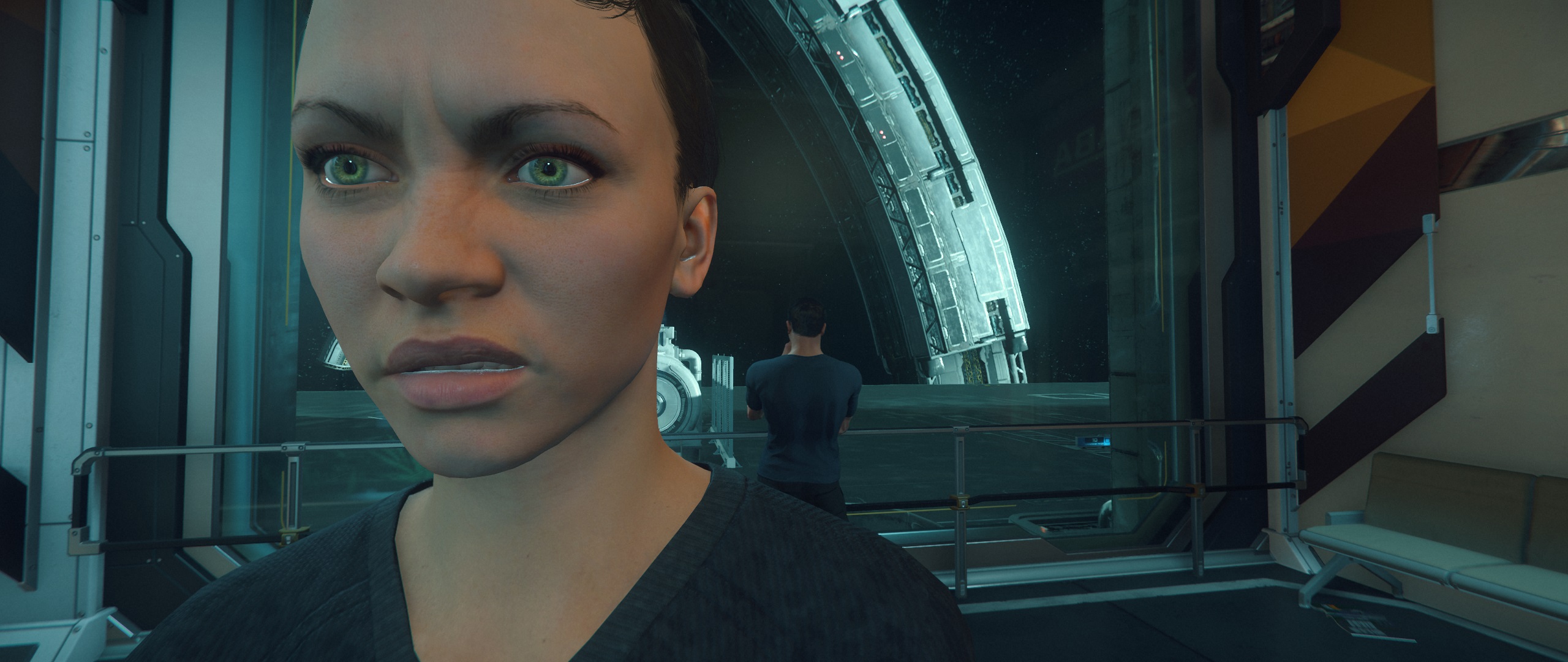
Hello citizens! Today, I’m going to talk about a little game that’s been flying under the radar and I think deserves some air time: Star Citizen. I’m obviously being a bit facetious here as Star Citizen is no stranger to the limelight or drama. This week I want to review the Crytek v. Cloud Imperium Games lawsuit filed back in 2017 that’s now finally stumbling to a close.
I read the entire case history of Crytek v. Cloud Imperium Games, creator of Star Citizen, and in seven minutes or less, I can get you to the main deciding factor of this lawsuit and why it’s important. There are several hundred pages of complaints, motions, memoranda, and general legal chicanery attached to this suit so far, and frankly I’m going to skip over most of it. Chances are I left something out that someone feels is super important, and if so, drop me a note in the comments and I’ll try to address it.
But within the scope of this piece, there are a total of five documents we are going to focus on: the First Amended Complaint (FAC) from Crytek, the Second Amended Complaint from Crytek (SAC), the Order on the Motion to Dismiss the FAC, the Order on the Motion to Dismiss the SAC, and the Game License Agreement (GLA). It’s going to be an acronym-heavy one, folks. You may also want to dive in to our coverage from the last year and a half of the suit, where we’ve addressed additional points of the case that we won’t bring back up here:

The First Amended Complaint
In the FAC, Crytek lists five complaints it says justifies Breach of Contract and therefore entitles it to damages. Four of those complaints are almost entirely dependent on the 5th, so I’m going to skip those in favor of the really important one. On Page 8, Line 1 of the FAC, Crytek alleges that the “Defendants [Cloud Imperium Games and Roberts Space Industries) Broke Its Promise to Exclusively Use CryEngine for the Game.”
Paragraphs 36 – 39 go to cite the GLA in section 2.1.2 and its use the word “exclusivity,” which Crytek interprets like so: “Section 2.1.2 of the GLA contained a critical promise from Defendants that they would not develop the Star Citizen video game using any other video game engines.” This means that Crytek believes that when CIG pivoted to using Lumberyard, it breached its contract.
This is important because Crytek needs to show not only that did CIG break the contract in December of 2016 but that it is still in breach of the contract. The other complaints are all predicated under the idea that CIG is still under contract and is still obligated to use CryEngine – and is therefore in violation for the other points.
A few days after Crytek filed the FAC, CIG filed its first Motion to Dismiss.
Order on CIG’s Motion to Dismiss
Fast forward to August 2018 when Judge Dolly Gee (amazing name) released her order on CIG’s Motion to Dismiss the complaint. On the surface, it looked like a solid win for Crytek: Judge Gee denied the Motion to Dismiss for everything except for punitive damages and the exclusivity argument we just talked about. Under California Law, the contract terms must be interpreted “in their ordinary and popular sense that a lay person would attach to them.” Under this requirement and looking at the rest of GLA, Judge Gee ordered that the exclusivity language governed only CIG’s ability to use CryEngine and did not constitute an obligation to do so.
Yeah, we saw that one coming.
The rest of the complaints from Crytek started to fall over at that point either because they require the actual use of the CryEngine to be valid or because the amount of time they could potentially claim damages for is now minuscule. Some complaints could get damages for about a year, others for only a few months if at all. It was really bad for Crytek even though it looked good on paper.
Interestingly though, Judge Gee seems to take pity on Crytek and points it to section 2.4 of the GLA with a wink and a nudge that it might have a case there. Thus was born the Second Amended Complaint.
The Second Amended Complaint
This complaint is almost exactly the same the FAC, except for the exclusivity section on Page 8, line 1. It now reads, “Defendants Broke Their Promise Not to Compete with CryEngine by Adopting And Promoting a Competing Game Engine.” Crytek points to, no surprise, section 2.4 of the GLA as justification:
“During the Term of the License, or any renewals thereof, and for a period of two years thereafter, Licensee, its principals, and Affiliates shall not directly or indirectly engage in the business of designing, developing, creating, supporting, maintaining, promoting, selling or licensing (directly or indirectly) any game engine or middleware which compete with CryEngine.”
Crytek alleges that CIG violated section 2.4 on two different occasions: in September of 2016 when Chris Roberts made mention of “Star Engine” in place of CryEngine and then in December 2016 when CIG announced that it was moving to Lumberyard. Those two instances, Crytek argues, constitute a breach of contract because they are promoting a competing engine.
As expected, CIG files a second Motion to Dismiss to go with the Second Amended Complaint.
The Order on CIG’s Motion to Dismiss the Second Amended Complaint
So now we jump ahead a few months again and Judge Gee is back with her Order for CIG’s Motion to Dismiss. In what I can only assume is a coup de grâce of judicial trolling, Judge Gee grants the motion to dismiss because based on section 2.4 of the GLA, which she pointed Crytek toward in her first Order, CIG was not “in the business of” promoting a competing game engine. The two singular references to Star Engine and Lumberyard were not enough to justify a breach or establish that CIG was in the business of promoting either of those engines. Even worse, Judge Gee says that even repeatedly mentioning either Star Engine or Lumberyard still wouldn’t have been enough to breach section 2.4.
There’s also a section in section 2.4 about licensing “to a third party” vs. “from a third party,” where Crytek again unsuccessfully argues that section 2.4 prevents CIG from licensing Lumberyard (hearkening back to its exclusivity argument from the FAC) because section 2.4 prevents licensing from a third party. Judge Gee points out that the language governs whether CIG could license to a third party when taken in the context of the rest of section 2.4, which again, it is required to do as part of California law.
At this point, Crytek has lost the ability to mandate that CIG has to use CryEngine, which has summarily the same effects on the four remaining complaints, which no longer apply because they govern only when the CryEngine is in use, and the amount of damages Crytek could be awarded is less than the cost of actually pushing the case forward.
Several weeks after Judge Gee’s order, Crytek responded that it was not going to submit a Third Amended Complaint. While there are technically still four complaints Judge Gee didn’t dismiss, it’s probably not worth the time and especially the legal fees to pursue them.
The settlement
As MassivelyOP reported back in March 2019, legal proceedings have since moved to “alternative dispute resolution.” This likely means that Crytek is trying to settle out of court to avoid the frankly astronomical legal feeds that it would be obligated to pay to CIG because of the failed lawsuit. The current date for the hearing is June 28th, 2019, so either way, we should have an end to this particular bit of Star Citizen drama soon.
Finally, I would love to claim all of this legal know-how for myself, I would be remiss to not mention YouTuber Law, whose video was super helpful in helping sift through the piles of court documents to confirm the stuff that really matters.
 Every other week, Andy McAdams braves the swarms of buzzwords and esoteric legalese of the genre to bring you Massively OP’s Lawful Neutral column, an in-depth analysis of the legal and business issues facing MMOs. Have a topic you want to see covered? Shoot him an email!
Every other week, Andy McAdams braves the swarms of buzzwords and esoteric legalese of the genre to bring you Massively OP’s Lawful Neutral column, an in-depth analysis of the legal and business issues facing MMOs. Have a topic you want to see covered? Shoot him an email!
















